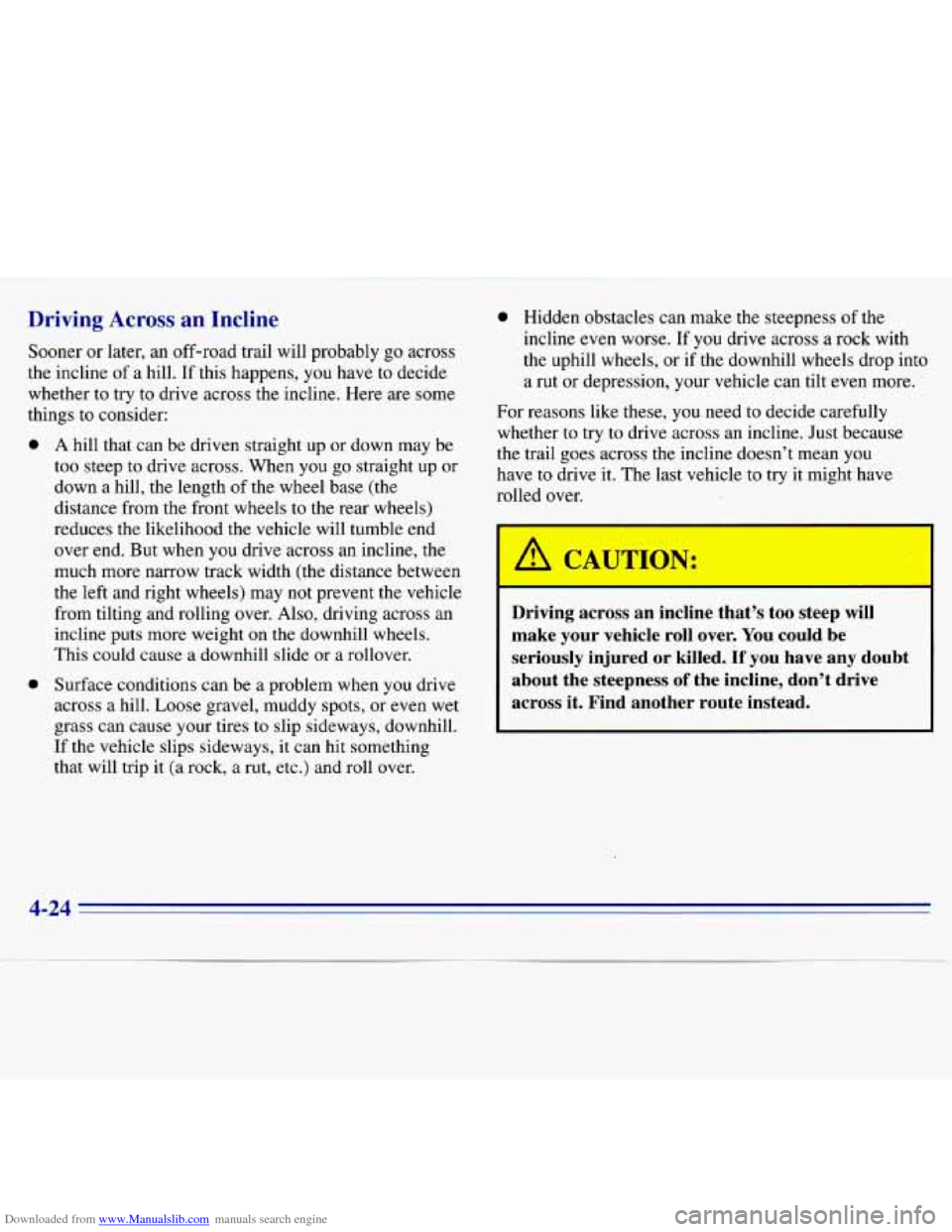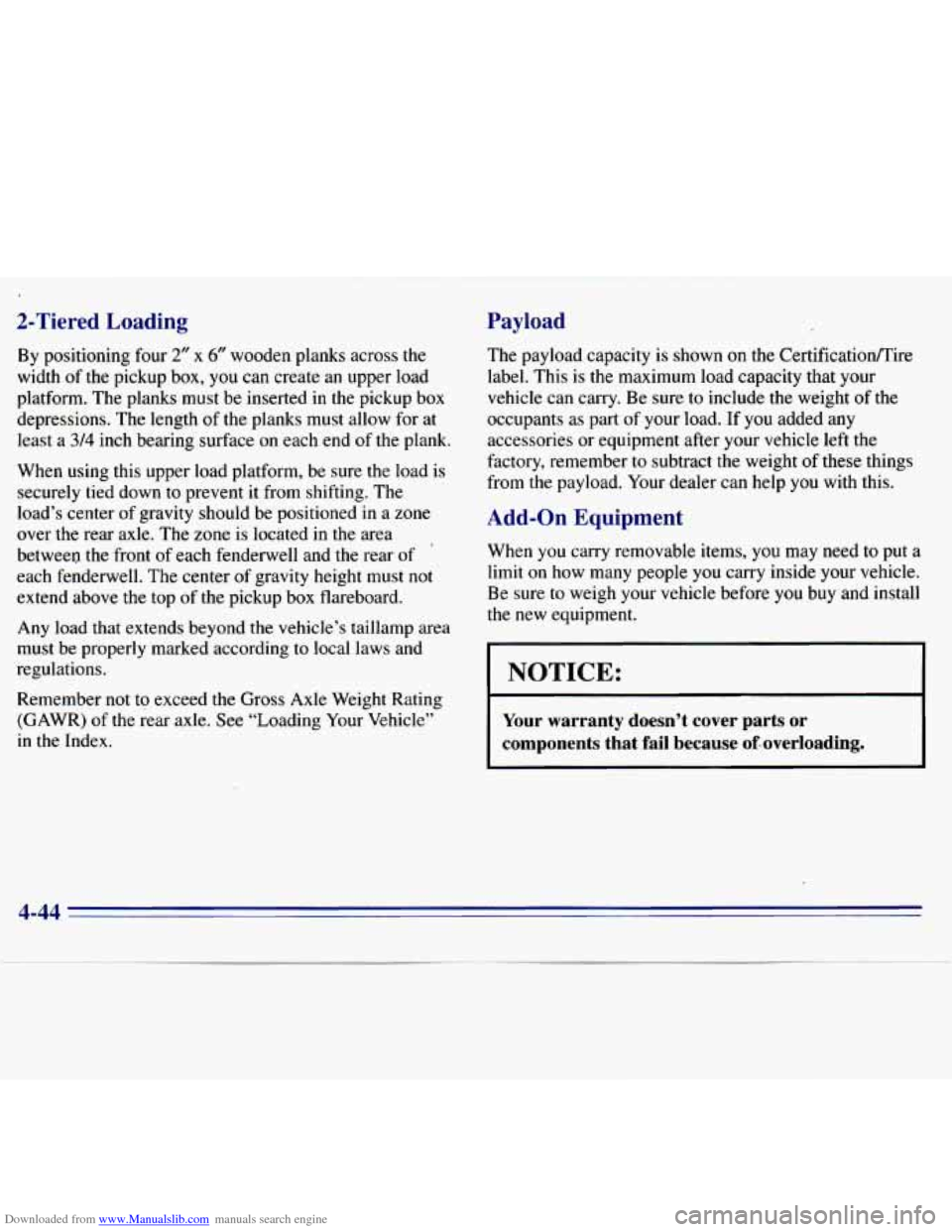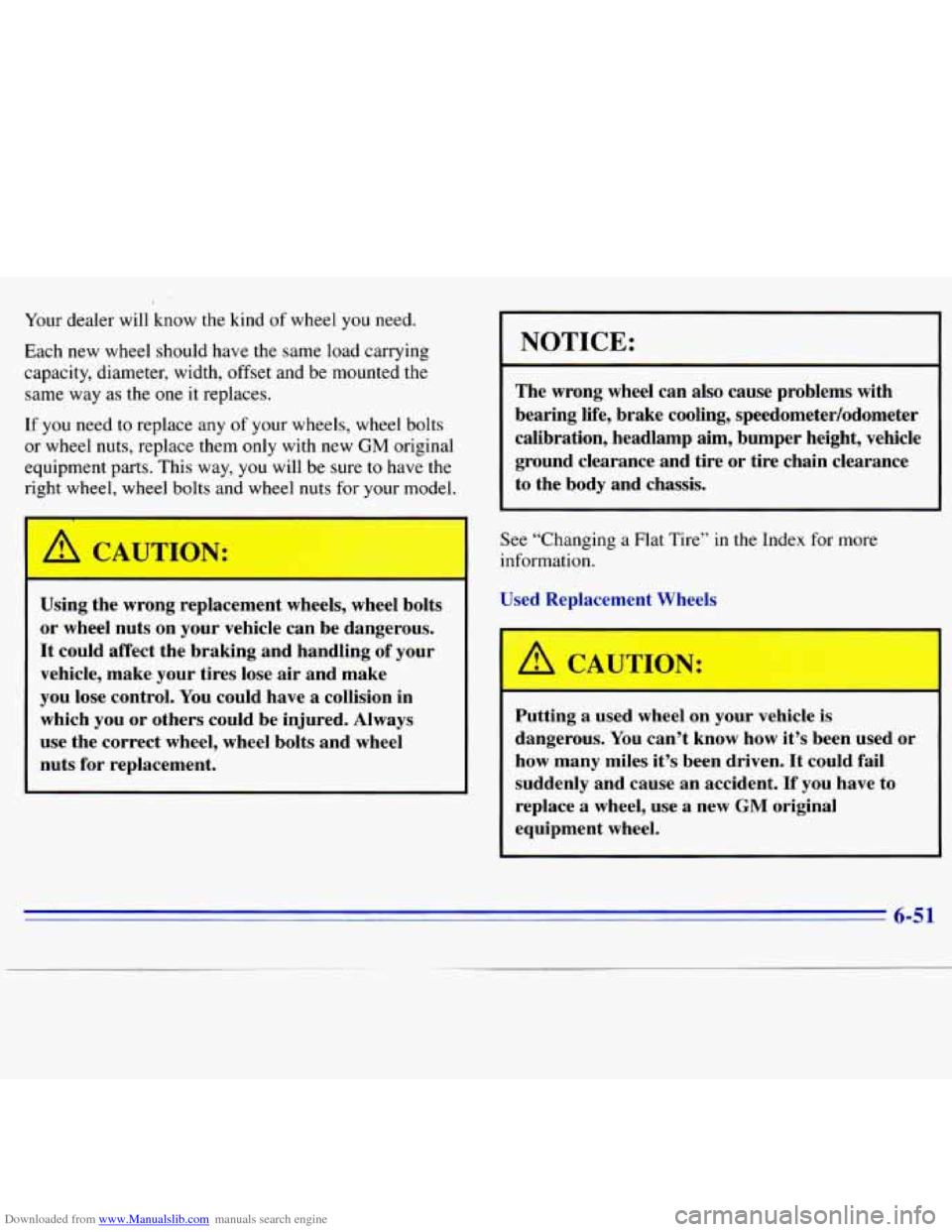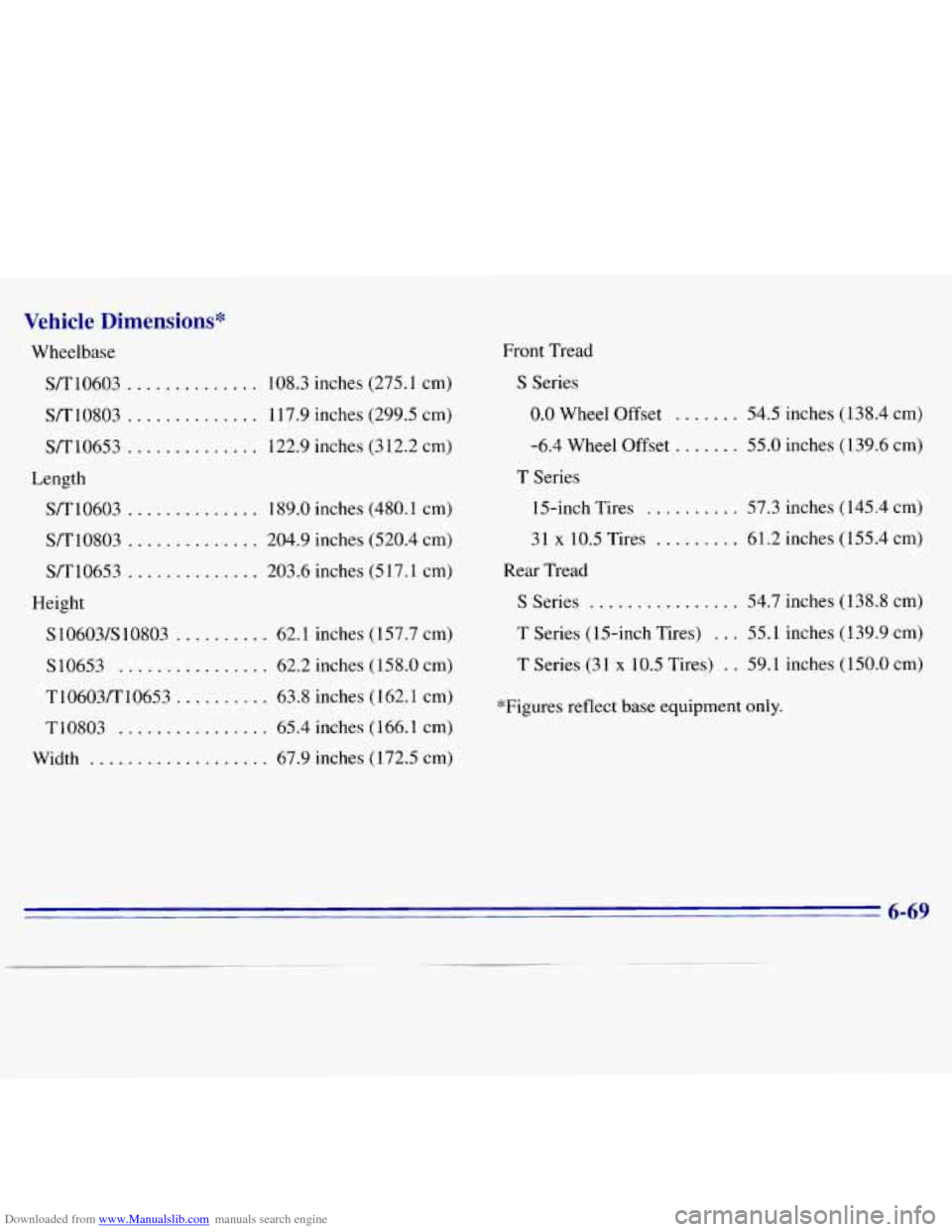Page 28 of 375
Downloaded from www.Manualslib.com manuals search engine @' What's wrong with this?
I
You can be seriously injured by a twisted belt. In
a crash, you wouldn't have the full width of the
belt
to spread impact forces. If a belt is twisted,
make it straight
so it can work properly, or ask
your dealer to
fix it.
A: The belt is twisted across the body.
1-17
Page 155 of 375

Downloaded from www.Manualslib.com manuals search engine Driving Across an Incline
Sooner or later, an off-road trail will probably go across
the incline of a hill.
If this happens, you have to decide
whether to try to drive across the incline. Here are some
things to consider:
0
8
A hill that can be driven straight up or down may be
too steep to drive across. When you
go straight up or
down a hill, the length of the wheel base (the
distance from the front wheels to the rear wheels)
reduces the likelihood the vehicle will tumble end
over end. But when you drive across
an incline, the
much more narrow track width (the distance between
the left and right wheels) may not prevent the vehicle from tilting and rolling over. Also, driving across an
incline puts more weight on
the downhill wheels.
This could cause a downhill slide or a rollover.
Surface conditions can be a problem when you drive
across a hill. Loose gravel, muddy spots,
or even wet
grass can cause your tires to slip sideways, downhill.
If the vehicle slips sideways, it can hit something
that will trip it (a rock, a rut, etc.) and roll over.
0 Hidden obstacles can make the steepness of the
incline even worse. If you drive across a rock with
the uphill wheels, or if the downhill wheels drop into
a rut or depression, your vehicle can tilt even more.
For reasons like these, you need to decide carefully
whether
to try to drive across an incline. Just because
the trail goes across the incline doesn’t mean
you
have to drive it. The last vehicle to try it might have
rolled over.
‘ A CAUTIC 7:
,1
Driving across an incline that’s too steep will
make your vehicle roll over. You could be
seriously injured or killed.
If you have any doubt
about the steepness of the incline, don’t drive
across it. Find another route instead.
A 3A
Page 175 of 375

Downloaded from www.Manualslib.com manuals search engine 2-Tiered Loading
By positioning four 2” x 6” wooden planks across the
width of the pickup box, you can create an upper load
platform. The planks
must be inserted in the pickup box
depressions. The length of the planks must allow for at
least a
314 inch bearing surface on each end of the plank.
When using this upper load platform, be sure the load is
securely tied down to prevent
it from shifting. The
load’s center
of gravity should be positioned in a zone
over the rear axle. The zone is located
in the area
between the front
of each fenderwell and the rear of
each fenderwell. The center of gravity height must not
extend above
the top of the pickup box flareboard.
Any load that extends beyond the vehicle’s taillamp area
must be properly marked according to local laws and
regulations.
Remember not to exceed the Gross Axle Weight Rating
(GAWR) of the rear axle. See “Loading Your Vehicle”
in the Index.
Payload
The payload capacity is shown on the Certification/Tire
label. This is the maximum load capacity that your
vehicle can carry. Be sure to include the weight of the
occupants as part of your load. If you added any
accessories or equipment after your vehicle left the
factory, remember
to subtract the weight of these things
from the payload. Your dealer can help you with this.
Add-on Equipment
When you carry removable items, you may need to put a
limit on how many people you carry inside your vehicle.
Be sure to weigh your vehicle before you buy and install
the new equipment.
NOTICE:
I
Your warranty doesn’t cover parts or
components that fail because of, overloading.
4-44
~ .~ .
Page 277 of 375

Downloaded from www.Manualslib.com manuals search engine Your dealer will know the kind of wheel you need.
Each new wheel should have the same load carrying
capacity, diameter, width, offset and be mounted the same way as the one it replaces.
If you need
to replace any of your wheels, wheel bolts
or wheel nuts, replace them only with new
GM original
equipment parts. This way, you will be sure
to have the
right wheel, wheel bolts and wheel nuts for your model.
Using the wrong replacement wheels, wheel bolts
or wheel nuts on your vehicle can be dangerous.
It could affect the braking and handling
of your
vehicle, make your tires lose air and make
you lose control.
You could have a collision in
which you or others could be injured. Always
use the correct wheel, wheel bolts and wheel
nuts for replacement.
NOTICE:
The wrong wheel can also cause problems with
bearing life, brake cooling, speedometer/odometer
calibration, headlamp aim, bumper height, vehicle
ground clearance and tire or tire chain clearance
to the body and chassis,
See “Changing a Flat Tire” in the Index for more
information.
sed Replacement
7 keels
Putting
a used wheel on your vehicle is
dangerous. You can’t know how it’s been used or
how many miles it’s been driven, It could fail
suddenly and cause an accident.
If you have to
replace a wheel, use
a new GM original
equipment wheel.
6-51
Page 295 of 375

Downloaded from www.Manualslib.com manuals search engine Vehicle Dimensions"
Wheelbase S/T10603
.............. 108.3 inches (275.1 cm)
S/T10803
.............. 117.9 inches (299.5 cm)
S/T10653
.............. 122.9 inches (312.2 cm)
Length
S/T 10603 .............. I 89.0 inches (480.1 cm)
S/T10803
.............. 204.9 inches (520.4 cm)
S/T10653
.............. 203.6 inches (517.1 cm)
Height
S10603/S10803
.......... 62.1 inches (157.7 cm)
SI0653
................ 62.2 inches (158.0 cm)
T10603/T10653..
........ 63.8 inches (162.1 cm)
T10803
................ 65.4 inches (166.1 cm)
Width
................... 67.9 inches (172.5 cm) Front
Tread
S Series
0.0 Wheel Offset ....... 54.5 inches (138.4 cm)
-6.4 Wheel Offset
....... 55.0 inches (139.6 cm)
T Series
15-inch Tires
.......... 57.3 inches (145.4 cm)
3 1
x 10.5 Tires ......... 61.2 inches (155.4 cm)
Rear Tread
S Series ................ 54.7 inches ( 138.8 cm)
T Series (15-inch Tires)
... 55.1 inches (139.9 cm)
T Series (3 1
x 10.5 Tires) . . 59.1 inches (150.0 cm)
*Figures reflect
base equipment only.
6-69